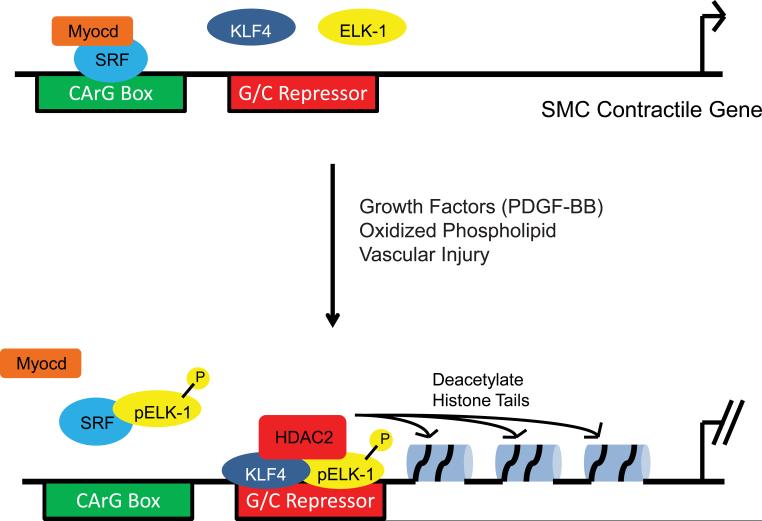Figure. Molecular model of G/C Repressor-mediated transcriptional silencing of SMC contractile genes.
(Upper panel) In response to intracellular signals including Rho/ROCK, MAP kinase and calcium, the SMC-restricted transcriptional coactivator, myocardin (Myocd) (orange) physically associates with the transription factor, SRF (blue). The Myocd/SRF complex, in turn, binds to CArG boxes (green rectangle) activating transcription of multiple SMC contractile genes. (Lower panel) In response to growth factors, including PDGF-BB, oxidizied phospholipid and vascular injury, the ETS domain transcription factor ELK-1 (yellow) is phosphorylated via a MAP kinase signaling cascade promoting its association with the transcriptional repressor, KLF4 (dark blue), and the chromatin-modifying enzyme, HDAC2 (red). This tripartite complex binds to the G/C Repressor element (red rectangle) in the SM22 promoter suppressing transcription. In addition, HDAC2 deacetylates histone tails altering chromatin structure and suppressing transcription. Phosphorylated ELK-1 (pELK-1) also associates with SRF displacing myocardin and abrogating binding of SRF to SMC CArG boxes. Putative G/C Repressor elements have also been identified in the Acta2 and Myh11 promoters.

